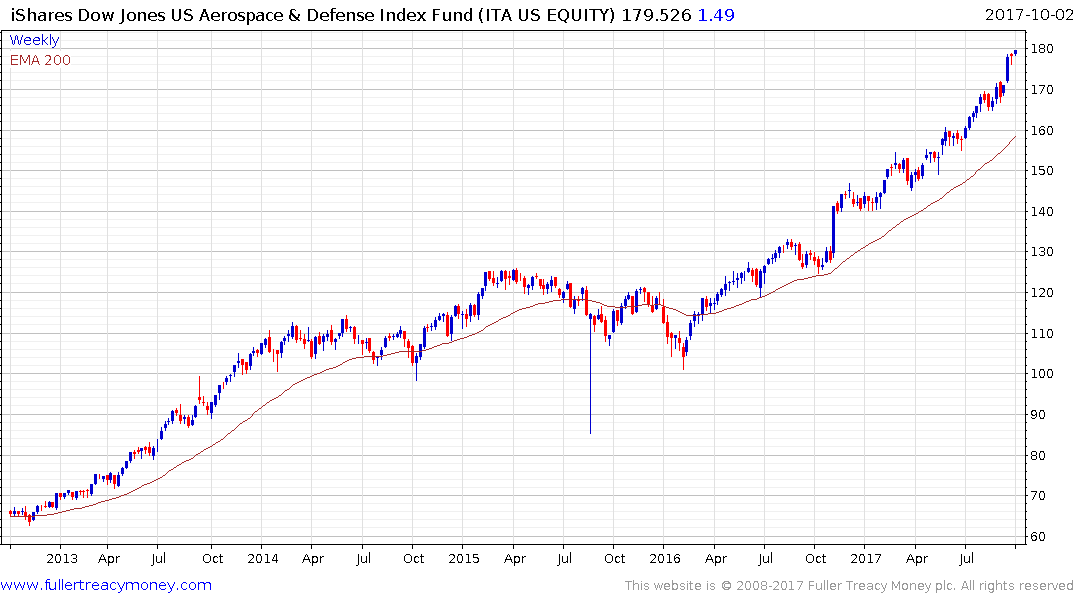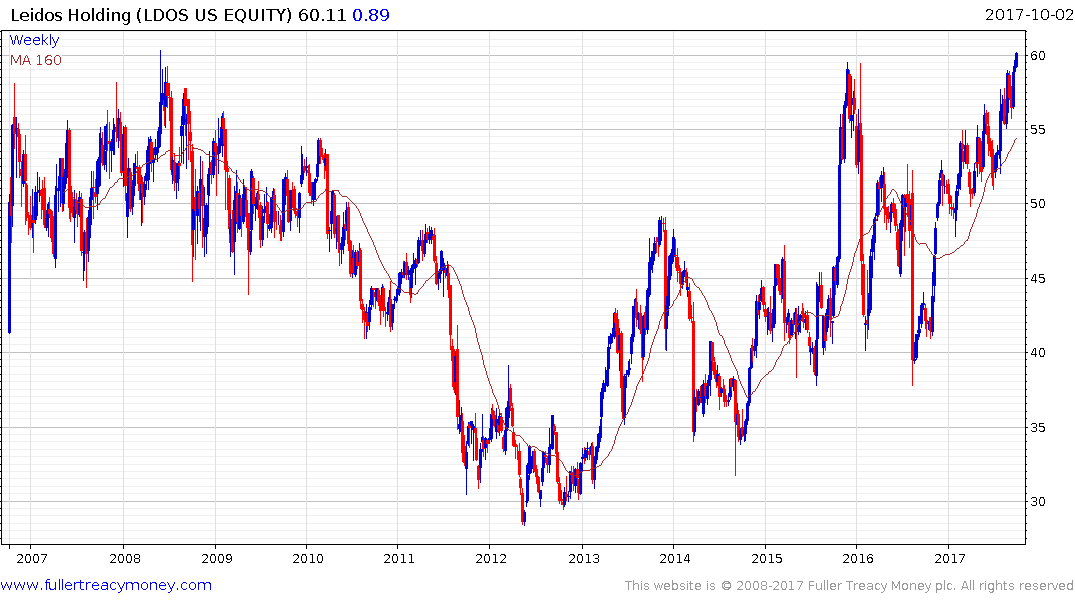Missile Defense: Money Well Spent; Budgets Unlikely to Stay Flat
Thanks to a subscriber for this report from Deutsche Bank which may be of interest to subscribers. Here is a section:
The threat from expanding missile technology by potentially adversarial nations is on the rise and has been since the early 2000s (see Figure 3). The most visible signal of that being the acceleration in missile technology breakthroughs and launches by North Korea. On the back of this accelerating tension is a rising tide of political support. A bipartisan call for higher missile defense spending seems to be gaining traction, with the "Advancing America's Missile Defense Act of 2017" gaining 27 cosponsors in the Senate (21 Republicans, 5 Democrats and 1 Independent) introduced in May 2017. The bill laid out a few points for its rallying cry, but in particular drove home that a 23% decline in Missile Defense Agency budget since 2006 (while Iran and North Korea activity was going in the opposite direction) needed to be corrected. In the Bill, there is explicit language to: 1) increase the number of ground-based interceptors (by 28 with expansion to 100 interceptors vs. the 44 scheduled to be in place at the end of 2017, 2) reintroduce the development and deployment of space-based missile defense sensors (e.g. Space Tracking and Surveillance System--STSS), and 3) evaluation and testing of radar and sensors for the ground-based midcourse systems (e.g. LRDR) as well as the system as a whole (for which testing funding has declined over 83% since 2006). More additions are possible following recommendations from the Department of Defense's upcoming Ballistic Missile Defense Review ("BMDR") and Missile Defeat Review ("MDR"). Even more near-term, the DoD this week released details of a budget reprogramming request for 2017 for over $400M ~5% of the Missile Defense budget) toward previously unfunded missile defense efforts consistent with the desires laid out in the "Advancing America's Missile Defense Act of 2017".
Here is a link to the full report.
Subscribers are probably aware that I was intrigued by the many topics covered in Elon Musk’s presentation to the 68th International Astronautical Congress. There were some big claims made which highlighted the rapid pace of innovation in the space sector, the introduction of private capital has achieved. However, there are some pressing geopolitical considerations that should also be considered from this evolution.
For example, Musk claimed that his rockets will soon have such precise landing capabilities that they will be able to return to their take-off struts which will eliminate the need for them to have legs. That degree of accuracy for a hypersonic vehicle has never been possible with ICBMs, although 200m accuracy is probably fine when all you want to do is obliterate the landing site.
The fact countries under severe trade restrictions, like North Korea and Iran, can field ballistic missiles is a testament both to the failure of sanctions but also to how low the barrier to entry has become in the modern era.
The capabilities of the defence sector are likely to accelerate, not least in a copycat fashion, following the innovations companies like SpaceX, Blue Origin and Virgin Galactic have pioneered. That suggests there will be inevitable pressure to militarise space even with treaties prohibiting it.

The iShares DJ US Aerospace & Defense ETF is currently somewhat overbought relative to the trend mean, but a sustained move below it would be required to question medium-term scope for additional upside.
Clicking through the constituents of the defence section of the Chart Library, the majority of large military contractors have been trending strongly for some time.

Leidos is now testing the upper side of a decade long range and is a potential catch-up play.


